The West Indies completed the test leg of its month long-tour to India on Saturday morning with 2-0 defeat in the three-test series.
Surprisingly, this was the first time a Caribbean side had visited the Asian sub-continent nation for a test series since 2002 when Carl Hooper was the captain.
Hooper’s side had similarly lost that three game series 2-0 back then as well. But, regardless of the exciting drawn final test (the second pulsating test match in five-days around the globe following Australia’s tense two-wicket victory over South Africa in Johannesburg) Darren Sammy’s men were generally second best throughout the series.
The drama of the pulsating final day of the third test has aided in reinvigorating the premise among long-standing cricket fans, that only test cricket – the game’s purest format – can produce such a prolonged mental, physical and tactical contest which one-day internationals and Twenty20 cricket would struggle to emulate for obvious reasons.
In summarizing the West Indies 2-0 series loss, the Caribbean side impressed with both bat and ball in patches but were undone at the vital moments by the still inexperienced batting line-ups and their highly suspect techniques against the India spinners throughout the three tests.
Those deficiencies in a lot of ways prevented them from giving India a stiffer fourth innings target in the first test at Delhi due to their second innings collapse. Then, in both the Kolkata and Mumbai tests, the substantial 450 plus scores of one innings was undermined by the mediocre scores of 153 and 134 in the other innings.
Bravo, Edwards and Brathwaite
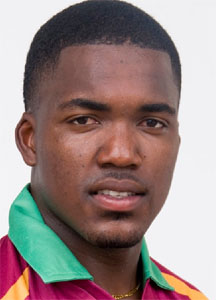
Pretty much the most encouraging aspect was the batting of batsmen Darren Bravo, Kirk Edwards and to a lesser extent Kraigg Brathwaite.
Bravo, who entered the India series on the back of his first test century of 195 in Bangladesh; in a lot of ways with his tour aggregate of 404 runs at 67.33, has finally convinced some skeptical fans in the Caribbean that he is on way to living up to the somewhat burdensome comparison he has had with countryman and retired West Indies batting maestro Brian Lara.
Lara himself in an interview on espncricinfo.com has now tipped Bravo for greatness.
Edwards, after six tests, now averages 54, all from the coveted number three position that has belonged to Ramnaresh Sarwan for the majority of the last 10 years. If the stylish Guyanese right-hander is to return to the regional set-up, Edwards at the moment is building a crescendo of road-blocks along that path.
Brathwaite’s style of opening in era where the majority of stalwart international openers such as Virender Sehwag, Chris Gayle, Shane Watson, Tillakaratne Dilshan and Brendon McCullum look to take the attack to new-ball bowlers early on, has brought nostalgic throwback to the pre-war English style batsmanship exemplified by greats such as Len Hutton and Herbert Sutcliffe according to historians who saw these legends bat.
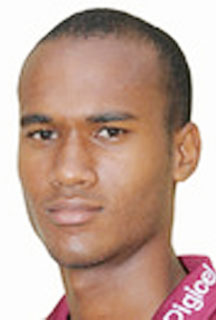
In his way way, his modus operandi is simple. Impeccable judgment and discipline to constantly leave balls pitched outside the line of off-stump – then waiting for the bowler to bowl to his strengths and capitalizing.
The only issue with Brathwaite is that he has no creditable in-front of the wicket shots; his scoring zone is basically behind the wickets with flicks behind square leg and placement shots behind point and to the third-man area.
Once he can add a competent scoring zone in front of the wicket to his repertoire along with the possible return of Gayle, Adrian Barath who is still in scheme of things, Lendl Simmons if he can translate his limited overs exploits to tests and even Edwards who is an opener by trade – the West Indies selectors have a solid portion of options to choose to open the batting in test cricket.
In the bowling department Ravi Rampaul continued his impressive renaissance in 2011 as the Windies bowling spearhead to finish the year with 31 wickets from eight tests at an average of 25, while Fidel Edwards and Devendra Bishoo bowled much better than their respective averages of 66 and 62 suggest.
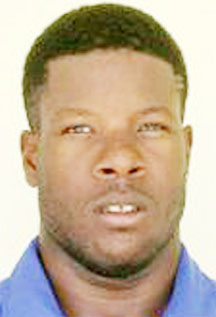
So for reasons aforementioned, against a top-quality but ageing Indian team who just came off a 4-0 drubbing in England in August, one is left to ponder over two hypothetical’s scenarios. Firstly, how the younger batsmen would have performed if another experienced batsman like Gayle was present along with Chanderpaul in the top six. Secondly, if the attack was more balanced with Kemar Roach or Andre Russell/Shannon Gabriel (had either of the latter two been picked in the squad beforehand) playing as the third-quick bowler or if the second spinner in Shane Shillingford was being chosen to back-up Bishoo instead of Sammy – how much of a difference this may have made.
The Sammy dilemma
Let us be uncompromisingly frank here. Under no circumstances should Darren Sammy be leading the West Indies team. He cannot command a place in the test squad on merit.
When you analyze what would constitute the best West Indies bowling attack for most conditions, it would be formulated under the 3:1 ratio (3 fast bowlers and 1 spinner). The emergence of Bishoo means for now the West Indies have a solid test spinner, which leaves space for three (3) fast bowlers. Once fit all of Kemar Roach, Fidel Edwards, Ravi Rampaul, Jerome Taylor and Andre Russell unequivocally would be ahead of Sammy in the pecking order, since it’s as clear as crystal that the aforementioned five, are better pure-pace or seam bowlers than Sammy.
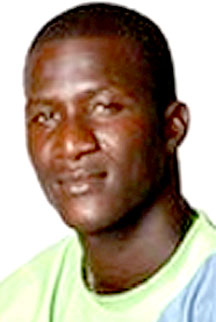
I would even argue that the likes of Nelon Pascal and Gabriel should be considered for a test match bowling spot before Sammy.
In the limited-overs and Twenty20 set-ups, Sammy also should not be a fixture, but rather be fighting hard to make the team, since he is nothing more than a ‘bits and pieces’ all-rounder.
People need to accept these hard-core facts and stop trying to be politically correct by regurgitating the lame rationales put out by the West Indies Cricket Board (WICB) which in a demonstration of folly continues to act as if the selection of Sammy does not affect the balance of the West Indies team across all-formats.
Sammy is an honest player who has been unfairly thrown into the helm of captaincy of the Windies team due to the ongoing fiasco with the WICB, the West Indies Players Association and Gayle. Since taking over the captaincy in November 2010, the St. Lucian’s record shows that in the 13 tests as captain he has taken 32 wickets at an average of 32.00 with a singular five-wicket haul and has scored 335 runs at an average of 15.95. Although he is supposedly an all-rounder his bowling is what has stood out and Sammy has not embarrassed himself. But if a bowler of Sammy’s limited ability can hold his own so well, the more potent options should be playing and pretty much every knowledgeable West Indian fan acknowledges this.
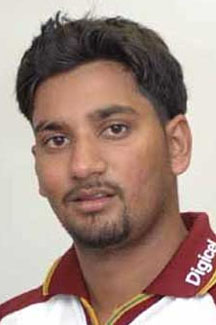
If Sammy himself is au fait with recent test cricket history, he may have heard the story of former England Captain Mike Dennis, who during the famous 1974/75 Ashes series, dropped himself for a test after relentless media pressure over his tenure in charge, as his team struggled to cope with legendary Australian fast-bowlers Dennis Lillee and Jeff Thompson at their peak.
For the benefit of West Indies cricket, Sammy should take it one step further and resign from the captaincy altogether. He is really affecting the balance and performance of the team – the team will certainly be better off for it.
Of course this is easier said than done and may not happen in the immediate future. However, Australia’s tour of the West Indies is on the horizon and West Indies will visit England next May and the luxury of the team carrying a captain/player who cannot merit his place as a genuine all-rounder cannot be afforded against these two top-ranked teams (rated numbers one and four respectively). Failure of the West Indies to show continued improvement against these two heavyweights and another performance failure by Sammy may well spell his death knell as captain of the regional team.
The loyal cricket loving supporters of the Caribbean are at the end of their tether awaiting the taste of success once again but the WICB selectors need to do what is right.








